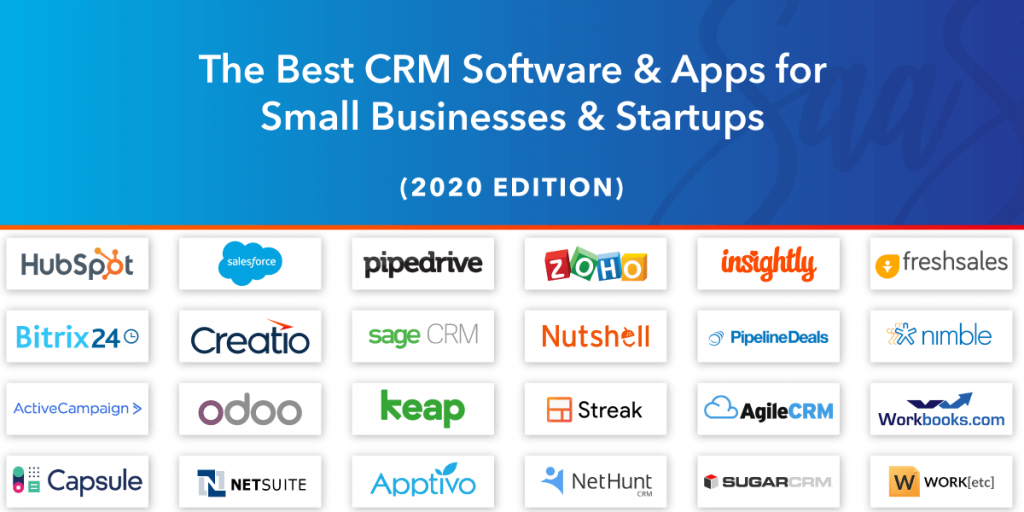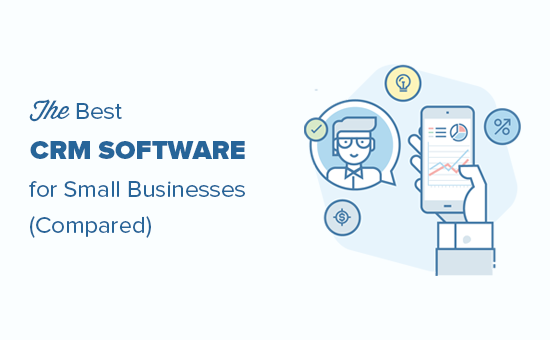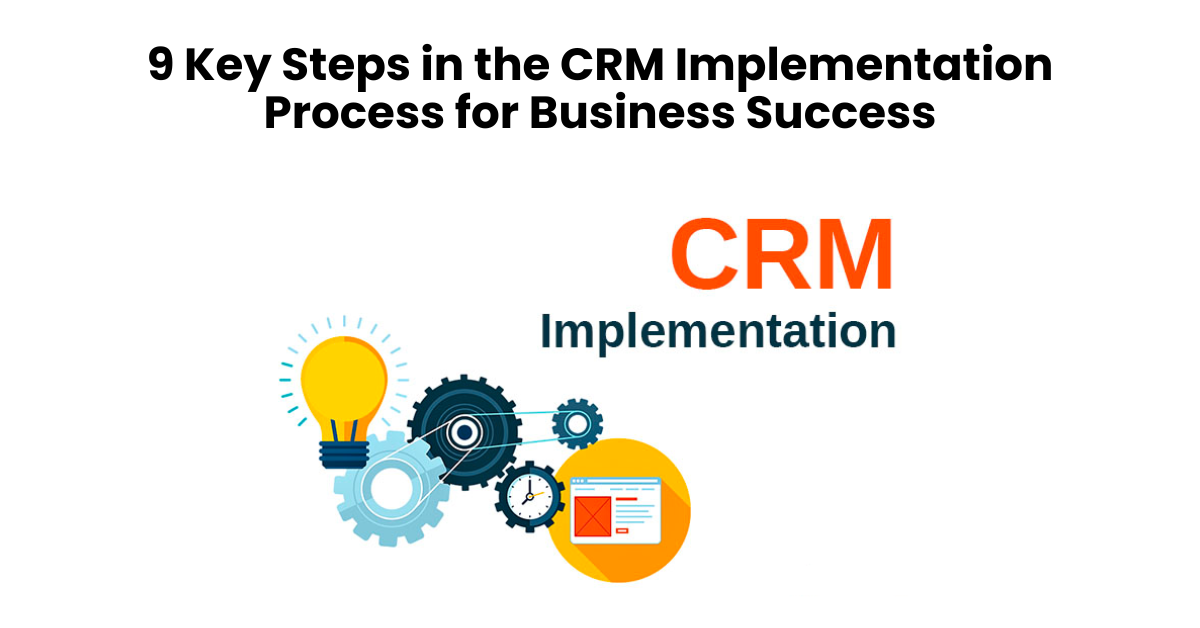
Small Business CRM Tutorial: Your Complete Guide to Customer Relationship Management
Running a small business is a whirlwind. You’re juggling a million things – from product development and marketing to sales and customer service. Amidst all the chaos, keeping track of your customers can feel like herding cats. That’s where a Customer Relationship Management (CRM) system swoops in to save the day. This comprehensive small business CRM tutorial will guide you through everything you need to know, from the basics to advanced strategies, helping you harness the power of CRM to boost your sales, improve customer satisfaction, and ultimately, grow your business.
What is a CRM System? (And Why Does Your Small Business Need One?)
At its core, a CRM system is a technology that helps you manage all your company’s relationships and interactions with customers and potential customers. Think of it as a central hub where you store all the essential information about your contacts, track your interactions, and automate key processes. A good CRM isn’t just a contact list; it’s a powerful tool that can transform how you do business.
Here’s why your small business desperately needs a CRM:
- Centralized Information: No more scattered spreadsheets or sticky notes! A CRM puts all customer data in one easily accessible place.
- Improved Customer Service: Accessing customer history allows you to provide personalized and responsive support, leading to happier customers.
- Enhanced Sales Efficiency: CRM automates tasks, provides sales insights, and helps your team close deals faster.
- Better Marketing Campaigns: Segment your audience and tailor your marketing messages for increased effectiveness.
- Data-Driven Decisions: CRM provides valuable data and reports, helping you make informed decisions about your business.
- Increased Sales and Revenue: Ultimately, a well-implemented CRM system helps you close more deals and drive revenue growth.
Key Features of a CRM System
While CRM systems vary, they generally offer a core set of features designed to streamline your business processes. Let’s take a look at some of the most important ones:
Contact Management
This is the foundation of any CRM. It allows you to store detailed information about your contacts, including names, contact details, company information, and communication history. You can also segment your contacts based on various criteria, such as demographics, purchase history, or lead source.
Lead Management
CRM systems help you track and nurture leads through the sales pipeline. This includes capturing lead information, assigning leads to sales reps, tracking lead activity, and automating follow-up tasks. Lead scoring features can also help you prioritize the most promising leads.
Sales Automation
Sales automation features streamline your sales process by automating repetitive tasks, such as email follow-ups, appointment scheduling, and quote generation. This frees up your sales team to focus on building relationships and closing deals.
Marketing Automation
CRM systems often include marketing automation features, such as email marketing, social media integration, and campaign management. These tools help you nurture leads, engage with customers, and track the performance of your marketing campaigns.
Reporting and Analytics
CRM systems provide valuable insights into your sales and marketing performance. You can generate reports on key metrics, such as sales revenue, lead conversion rates, and customer satisfaction. This data helps you identify areas for improvement and make data-driven decisions.
Customer Service and Support
Many CRM systems offer customer service features, such as help desk integration and case management. This allows you to track customer issues, provide timely support, and improve customer satisfaction.
Choosing the Right CRM for Your Small Business
With so many CRM systems on the market, choosing the right one can feel overwhelming. Here’s a step-by-step guide to help you make the right decision:
1. Assess Your Needs
Before you start shopping around, take some time to assess your business needs. What are your current challenges? What features are most important to you? Consider the following questions:
- What are your sales goals? How many leads do you generate each month? What is your average deal size?
- What are your customer service needs? How many customer inquiries do you receive? What is your average response time?
- What is your marketing strategy? Do you use email marketing, social media, or other channels?
- What is your budget? How much are you willing to spend on a CRM system?
- How tech-savvy is your team? Do you need a user-friendly system with a simple interface?
2. Research CRM Options
Once you have a clear understanding of your needs, start researching CRM options. Some popular choices for small businesses include:
- Zoho CRM: A versatile and affordable option with a wide range of features.
- HubSpot CRM: A free CRM with excellent marketing automation capabilities.
- Pipedrive: A sales-focused CRM designed for ease of use.
- Salesforce Essentials: A scaled-down version of Salesforce for small businesses.
- Freshsales: A sales CRM with built-in phone and email.
Read reviews, compare features, and consider your budget. Most CRM providers offer free trials, so take advantage of them to test out the systems and see which one is the best fit for your business.
3. Consider Scalability
Choose a CRM that can grow with your business. As your business expands, you’ll need a CRM that can handle increased data volume, more users, and more complex processes. Look for a CRM that offers different pricing plans and feature sets to accommodate your future needs.
4. Evaluate Integrations
Consider which other tools and applications your business uses, such as email marketing platforms, accounting software, and social media platforms. Make sure the CRM you choose integrates with these tools to streamline your workflows and avoid data silos.
5. Prioritize User-Friendliness
A CRM is only effective if your team actually uses it. Choose a system that is easy to use and navigate. Look for a clean interface, intuitive features, and helpful tutorials and support resources.
6. Factor in Support and Training
Make sure the CRM provider offers adequate support and training resources. Look for options like online documentation, video tutorials, email support, and phone support. Consider whether you need on-site training or consulting services to help you implement and use the CRM effectively.
7. Pricing Models
CRM systems come in various pricing models. Common models include:
- Free: These plans offer basic features and are suitable for very small businesses with simple needs.
- Subscription-based: Most CRM systems use a monthly or annual subscription model, with prices varying based on features and the number of users.
- Usage-based: Some CRMs charge based on usage, such as the number of contacts or emails sent.
Carefully evaluate the pricing plans and choose the one that best fits your budget and needs.
Implementing Your CRM: A Step-by-Step Guide
Once you’ve chosen a CRM, the real work begins: implementation. Here’s a step-by-step guide to help you get started:
1. Planning and Preparation
Before you dive in, develop a detailed implementation plan. This plan should include:
- Define Your Goals: What do you want to achieve with your CRM?
- Data Migration: How will you transfer your existing data into the CRM?
- User Training: How will you train your team to use the CRM?
- Timeline: Set realistic deadlines for each step of the implementation process.
2. Data Migration
Migrating your existing data into the CRM is a crucial step. This typically involves:
- Cleaning Your Data: Remove duplicate entries, outdated information, and inaccurate data.
- Formatting Your Data: Ensure your data is in a format that is compatible with the CRM.
- Importing Your Data: Use the CRM’s import tools to upload your data.
- Testing Your Data: Verify that your data has been imported correctly.
3. Customization
Customize the CRM to meet your specific business needs. This may involve:
- Adding Custom Fields: Create custom fields to store information that is unique to your business.
- Configuring Workflows: Automate tasks, such as email follow-ups and lead assignment.
- Integrating with Other Tools: Connect the CRM with other tools, such as email marketing platforms and accounting software.
4. User Training
Train your team on how to use the CRM effectively. This should include:
- Provide Comprehensive Training: Cover all the key features and functionalities of the CRM.
- Offer Hands-on Practice: Allow users to practice using the CRM with real data.
- Create Training Materials: Develop user manuals, video tutorials, and other resources to support your team.
- Provide Ongoing Support: Offer ongoing support to help users troubleshoot issues and improve their skills.
5. Testing and Refinement
Test the CRM thoroughly to ensure it is working as expected. Make any necessary adjustments and refine your workflows to optimize performance.
6. Ongoing Management
Once the CRM is up and running, it’s essential to manage it effectively. This includes:
- Regular Data Updates: Keep your data clean, accurate, and up-to-date.
- Performance Monitoring: Track key metrics, such as sales revenue, lead conversion rates, and customer satisfaction.
- Workflow Optimization: Continuously refine your workflows to improve efficiency.
- User Feedback: Gather feedback from your team and make adjustments as needed.
Tips for CRM Success
Implementing and using a CRM can be a game-changer for your small business. Here are some tips to help you maximize your success:
1. Start Small and Scale Up
Don’t try to implement everything at once. Start with the core features and gradually add more functionality as your team becomes more comfortable. This will help you avoid overwhelming your team and ensure a smooth implementation process.
2. Get Buy-In from Your Team
Involve your team in the CRM implementation process from the beginning. Get their feedback, address their concerns, and provide adequate training. This will increase their buy-in and ensure they use the CRM effectively.
3. Define Clear Processes
Establish clear processes for using the CRM, such as how to enter data, how to manage leads, and how to track customer interactions. This will help your team work more efficiently and consistently.
4. Integrate CRM with Other Systems
Integrate your CRM with other systems, such as your email marketing platform, accounting software, and social media channels. This will streamline your workflows and provide a more complete view of your customers.
5. Regularly Review and Optimize
Regularly review your CRM usage and make adjustments as needed. Identify areas for improvement and optimize your workflows to maximize efficiency and effectiveness.
6. Focus on Data Quality
Ensure that your data is accurate, complete, and up-to-date. Clean up your data regularly, remove duplicate entries, and update contact information. This will ensure that you are making informed decisions based on reliable data.
7. Leverage Automation
Use automation features to streamline your sales and marketing processes. Automate tasks, such as email follow-ups, appointment scheduling, and lead assignment, to free up your team’s time and improve efficiency.
8. Train, Train, Train
Provide ongoing training and support to your team. Offer refresher courses, create training materials, and provide regular feedback. This will help your team stay up-to-date on the latest CRM features and best practices.
9. Analyze and Adapt
Regularly analyze your CRM data to gain insights into your sales and marketing performance. Identify areas for improvement and adapt your strategies accordingly. CRM is a dynamic tool, so it’s essential to continuously refine your approach to maximize its effectiveness.
10. Choose the Right CRM Partner
Consider the CRM provider’s reputation, support, and training resources. A good CRM partner will provide ongoing support and help you get the most out of your investment. Look for a provider that offers excellent customer service and is responsive to your needs.
Troubleshooting Common CRM Problems
Even with the best CRM implementation, you may encounter some common problems. Here’s how to troubleshoot them:
1. Low User Adoption
If your team isn’t using the CRM, it’s a major problem. Here’s how to fix it:
- Provide adequate training: Ensure your team understands how to use the system.
- Simplify the process: Make the CRM as user-friendly as possible.
- Get feedback: Ask your team about their challenges and address them.
- Highlight the benefits: Show how the CRM makes their jobs easier.
- Make it mandatory: Require all team members to use the CRM.
2. Data Inaccuracy
Garbage in, garbage out. Inaccurate data undermines the CRM’s value. Address this by:
- Implementing data validation: Make sure data is entered correctly.
- Cleaning your data: Regularly remove duplicates and outdated information.
- Training: Teach your team proper data entry techniques.
- Automating data entry: Use integrations to reduce manual data entry.
3. Integration Issues
If your CRM doesn’t integrate properly with other tools, it creates data silos. Resolve integration problems by:
- Verifying compatibility: Ensure your CRM and other tools are compatible.
- Testing the integration: Make sure data flows smoothly between systems.
- Contacting support: Reach out to the CRM provider or third-party support.
4. Slow Performance
A slow CRM can frustrate users. Improve performance by:
- Optimizing data: Remove unnecessary data and optimize database queries.
- Upgrading hardware: Ensure your server and network can handle the load.
- Contacting support: Seek help from your CRM provider.
5. Lack of Reporting
If you’re not getting the reports you need, you can’t make informed decisions. Fix this by:
- Customizing reports: Tailor reports to your specific needs.
- Training: Learn how to generate the reports you need.
- Contacting support: Get help from your CRM provider.
Conclusion
Implementing a CRM system is an investment in your small business’s future. By choosing the right CRM, implementing it effectively, and using it consistently, you can improve customer relationships, increase sales, and grow your business. This tutorial provides a comprehensive guide to help you navigate the world of CRM. Remember to assess your needs, research your options, and prioritize user-friendliness to maximize your success. Good luck!


